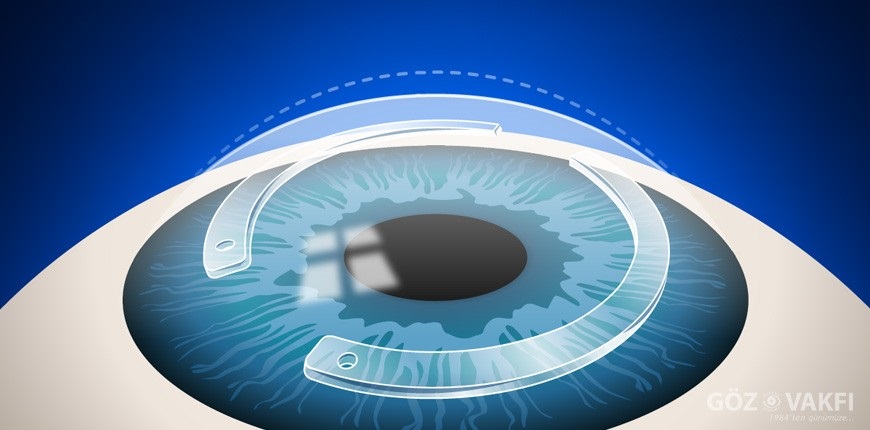
What is Keratoconus?
The transparent layer (cornea), which makes up the front of the eye, thins and bulges anteriorly due to the progressive disease keratoconus, which affects both eyes. Another name for it is corneal tapering.
The cornea is the layer of the eye that affects vision the most because it is where light rays enter the eye are bent. The rays focus incorrectly due to changes in this area, seriously reducing vision quality.
Ages 15 to 16 are typically when keratoconus first appears, but it can develop up to age 35. Depending on the patient, the disease may progress differently. The frequent switching of eyeglasses is typically the complaint in the early stages of keratoconus. As the illness worsens, wearing glasses will no longer provide clear vision.
Treatment of Keratoconus
Keratonus treatment is individualized because the disease's course and rate of progression can differ greatly from person to person.
There are cases that progress quickly and require corneal transplantation in patients who are in their twenties, as well as patients who can see clearly without even wearing glasses and are unaware of their diseases.
In actuality, there is no treatment for the structural disease keratoconus.
The purpose of the treatments is to achieve a level of vision that allows patients to lead comfortable lives.
CCL - (Corneal Cross - Linking)
It is a technique that has been applied more frequently over the past five years and halts the development of keratoconus. UVA and riboflavin are used in the procedure to strengthen the cornea's structure (Vitamin B2).
As a result, it is the first option for treating patients with progression, regardless of the severity of the disease or the patients' visual abilities. In some patients, CCL helps to improve vision in addition to slowing the progression of keratoconus.
Method
The epithelial layer on the outermost portion of the cornea is peeled off after the eye has been given drop anesthesia. The eye is injected with riboflavin solution five times a minute for 30 minutes. Then, for 30 minutes, 370 nm UVA is applied in an area of about 8 mm, 4-5 cm away from the corneal surface.
Every 5 minutes, riboflavin is still drip-applied during the UVA application. Once the procedure is complete, an antibiotic ointment is used to seal the eye.
Two days on average are needed for recovery.
Contact Lens
The cornea's shape is distorted in keratoconus. Soft lenses can be used to treat the mild astigmatism associated with early keratoconus. Even keratoconus-specific soft lenses are unable to improve vision as the condition worsens.
This is why piggyback (soft and semi-soft lenses together) and hybrid (hard in the middle, soft around) contact lenses are used. However, wearing contact lenses does not stop keratoconus from worsening. Patients who wear lenses should regularly be monitored, and CCL treatment should be administered as needed. To continue seeing clearly after this treatment, contact lenses are worn.
Intra-Corneal Rings (Keraring, Ferraring, Intacs)
They are mounted inside the corneal tissue that has deteriorated in keratotoconus and are transparent, tissue-compatible, glass-derived implants. They do not require putting on or taking off like contact lenses because they are inserted inside the cornea.
They can be sacrificed at any time or can remain in the eye without issue for a lifetime. Despite the fact that ring segments come in a variety of shapes and brands, all of them work in the same way.
The goal of this procedure is to improve the deformed cornea's smoothness and guarantee that the rays entering the eye are refracted correctly.
Method
After the eye has been given drop anesthesia, a Femtosecond (Intralase) laser is used to carve out a tunnel in the cornea that is the desired depth and diameter. The ring pieces are then inserted into the cornea with the aid of specialized forceps after this procedure, which takes about 10 seconds. The eye is open after the procedure.
In our clinic, we have been implanting rings since 2006. For the past few years, we have been able to stop the progression of keratoconus and give our patients a better visual outcome by combining this treatment with CCL treatment.
Keratoplasty (Corneal Transplant)
In cases where keratoconus progresses and the cornea loses its transparency or other methods fail to yield positive results, keratoplasty (Corneal Transplant) is the preferred procedure. The procedure known as a "keratoplasty," which the general public refers to as a "eye transplant," involves replacing the cornea of the eye with a donor cornea. The cornea of the eye had deteriorated due to various diseases.
In a corneal transplant procedure, a circular piece of the donor's healthy cornea with a diameter of 6 to 9 mm is removed, and a piece of the recipient's (patient's) cornea with a diameter of the same range is removed and sutured to this region. Preferably, general anesthesia will be used during the procedure.





